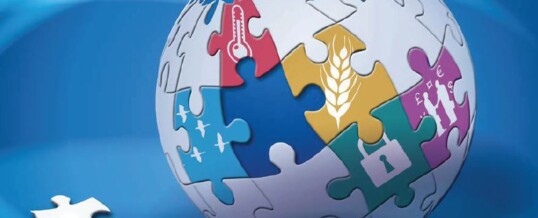
McLeod Group Blog by Stephen Brown, June 23, 2016
Providing foreign aid is only one among many things that countries like Canada can do to promote international development. Official development assistance (ODA) on its own is not sufficient to help developing countries radically improve the lot of their poor and marginalized people, including achieving the Sustainable Development Goals by the 2030 deadline.
A government’s policies beyond aid – including agriculture, fisheries, trade, investment, immigration, climate change, security and intellectual property – can also have positive or negative effects far beyond its national borders. Action across the policy spectrum could multiply the good work in developing countries that Canada is doing with its ODA.
In 2013, when Canada abolished CIDA, its stand-alone aid agency, and integrated the agency’s work into the new Department of Foreign Affairs, Trade and Development (DFATD, now Global Affairs Canada), the government argued that the expanded mandate would “improve foreign policy coherence and boost the impact that foreign aid and development work can have on less-developed countries”. That sounded promising.
In fact, though, there has been very little evidence of policy coherence for development over these past three years. In 2014, the Harper government issued an overarching policy for DFATD, called the Global Markets Action Plan, but its goal was to “ensure that all the diplomatic assets of the Government of Canada are harnessed to support the pursuit of commercial success by Canadian companies and investors in key foreign markets, to generate new jobs and new opportunities for workers and families here at home”. No benefits to people in developing countries were considered and foreign aid only makes one appearance in the plan: as “leverage… to advance Canada’s trade interests”. Not only did this turn on its head the basic idea of policy coherence for development, it also was at odds with Canadian law, which dictates that Canadian ODA be provided “with a central focus on poverty reduction”.
The election of a new government last year and especially its current International Assistance Review consultations provide an excellent opportunity to redirect policy coherence towards development. The review’s discussion document mentions near the end the “need to ensure that our efforts are coherent across government” and “to ensure the coherence of its domestic and international policies and initiatives” as part of efforts to reach the Sustainable Development Goals. It also asks, “How can we promote greater coherence between our development, trade and diplomacy efforts?”
Such intentions are laudable, but two problems immediately appear. First, the Trudeau government has already epically failed to put such policy coherence into practice in a very high-profile case: It went ahead with the sale of arms to Saudi Arabia, a deal originally brokered by the Conservatives. Liberal Foreign Minister Stéphane Dion justified this decision in part by the important economic benefits that the weapons’ manufacture will bring to Southern Ontario’s economy.
The message? Jobs at home are more important than human rights in one of the most repressive regimes in the world and one of the least respectful of women’s rights. Despite the Liberals’ touting a feminist foreign policy, it is hard to tell the difference from the Conservatives’ focus on Canadian commercial interests. Policy coherence for development fell hard at the first hurdle.
Then, within weeks of signing the arms’ export permits, Dion spun around 180o and announced to Canadian ambassadors that he was making “the promotion of ‘human rights, freedoms and inclusion’ part of their core objectives”. A change of heart – or a smokescreen for bad decisions?
The media subsequently revealed that two other countries with very poor human rights records, China and Algeria, were also among the top recipients of Canadian military goods. It will be interesting to see if the new “core objective” of human rights tempers the government’s enthusiasm for arms exports. It will be hard to tell, though, without greater government transparency: Dion is refusing to reveal whether he authorized the shipment of Canadian weapons to Thailand’s military regime.
The second problem is that the current international assistance review process is actually paying very little attention to policy coherence for development, despite the three mentions in the discussion paper quoted above. Almost all of the discussion is focused on aid, with a few references to peace and security issues.
A new development policy for Canada, as opposed to just a new aid policy, will require some bold objectives for action in other areas as well. Trade is one of the most important, but it has been left out of the review. Opening Canadian markets to goods from developing countries is one of the best ways to support their development. Canada can also promote their interests by backing favourable provisions in multilateral trade negotiations.
Canada should also strengthen the oversight and regulation of Canadian extractive companies operating in developing countries, allowing them to be held them accountable at home for illegal acts committed abroad, including environmental destruction and human rights abuses. Preventing harm can be as important as doing good.
It is not enough to seek to integrate only “our development, trade and diplomacy efforts”, as stated in the discussion paper. All international policy initiatives should be viewed through a development lens, asking what impact they will have on poor and marginalized men and women around the world. Other efforts Canada could take include increasing its share of the intake of refugees from the Middle East and other regions, consolidating its commitment to fight climate change domestically and internationally, leading efforts to reduce agricultural subsidies in industrialized countries, as well as working multilaterally to counter tax evasion and to limit the sale of deadly weapons to repressive regimes.
More attention to policy coherence for development is thus crucial for the Trudeau government’s current International Aid Review, its broader international policies and Canada’s place in the world.
